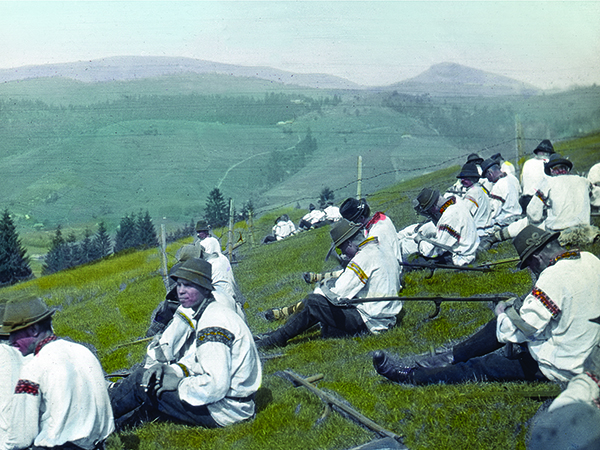Long regarded as one of the premier repositories of the Slavic, Russian and Eastern Europe print culture, the Czech National Library (The Národní Knihovna or, popularly, the Klementinum) and its Slavonic holdings contain many unique and unpublished collections. Numbered among these treasures are the recently discovered color slides, photographic prints and glass plate negatives (dating principally from the early 1920s) of Rudolf Hůlka (l887-l961), a Czech economic official by profession, as well as an artist, humanitarian, and eminent man of culture.
Hůlka’s combination of personal qualities and professional concerns are reflected in this large and significant contribution to the small number of known documentary and visual sources on the very early years of post-World War I Subcarpathian Rusyn life and culture during the First Czechoslovak Republic (1918–1939). As was the case with the work of his contemporary photographers and artists, such as Edward Steichen, Roman Vishniac, Florian Zapletal, and the United Press International’s Margaret Bourke-White, some of the photographs were posed, with an interest in creating an aesthetically pleasing or politically persuasive image. In fact, so prominent are the aestheticizing elements in some of the images that they appear to be calques of the oils and gouaches of the artists of the interwar “Carpathian Barbizon”: Adalbert Erdelyi, Iosif Bokshai, Andrii Kotska, and Zoltan Sholtes, among others. It is, however, the documentary value of these images of “ the peoples, the lands and regions, and the ‘sacred,’ ” that provides a healthy corrective to the nostalgia and idealization of the homelands on the part of the thousands of immigrants and their descendants that left these lands after 1918. For while Hůlka’s images certainly celebrate and romanticize the almost Arcadian landschaft of Subcarpathian Rus’, they also document the abject poverty, environmental degradation, and potentially volatile matrix of the many ethnic, linguistic, and religious identities that characterized interwar Subcarpathian Rus’.
Indeed, this extraordinary mixture of peoples, languages, and cultures would soon experience the wrenching changes associated with World War II, the onset of Soviet rule, and the consequent integration of this region with Ukraine.
Robert H. Scott, Digital Humanities Librarian, Columbia University Libraries, Curator, with the assistance of Edward Kasinec and Filip Tuček, Harriman Institute. The Curators gratefully acknowledge the assistance of The National Library of the Czech Republic and the staff of its Slavonic Library, most especially Lukáš Babka and Hana Opleštilová.


